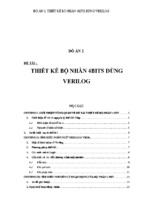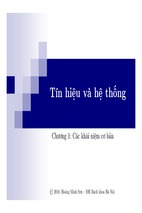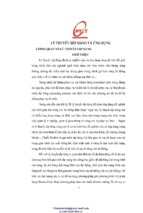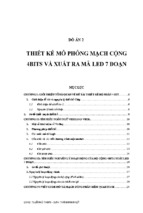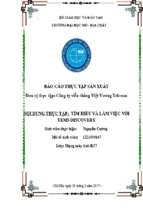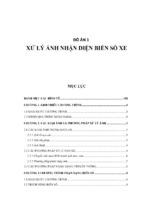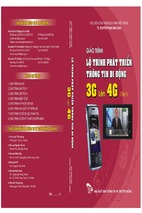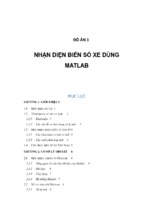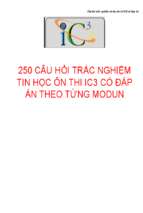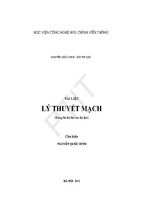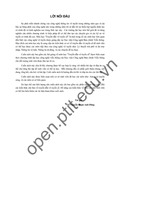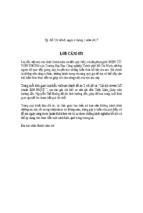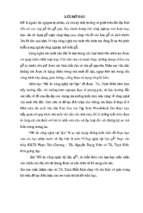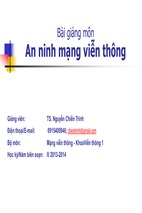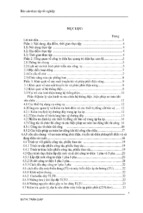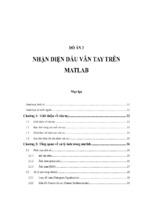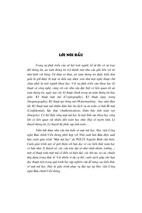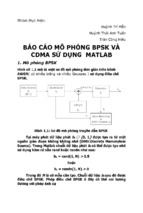This page is intentionally left blank
Microwave Engineering
This page is intentionally left blank
Microwave Engineering
Fourth Edition
David M. Pozar
University of Massachusetts at Amherst
John Wiley & Sons, Inc.
Vice President & Executive Publisher
Associate Publisher
Content Manager
Senior Production Editor
Marketing Manager
Creative Director
Senior Designer
Production Management Services
Editorial Assistant
Lead Product Designer
Cover Designer
Don Fowley
Dan Sayre
Lucille Buonocore
Anna Melhorn
Christopher Ruel
Harry Nolan
Jim O’Shea
Sherrill Redd of Aptara
Charlotte Cerf
Tom Kulesa
Jim O’Shea
R , Inc. and printed and bound by
This book was set in Times Roman 10/12 by Aptara�
Hamilton Printing. The cover was printed by Hamilton Printing.
C 2012, 2005, 1998 by John Wiley & Sons, Inc. All rights reserved.
Copyright �
No part of this publication may be reproduced, stored in a retrieval system or transmitted in
any form or by any means, electronic, mechanical, photocopying, recording, scanning or
otherwise, except as permitted under Sections 107 or 108 of the 1976 United States Copyright
Act, without either the prior written permission of the Publisher, or authorization through
payment of the appropriate per-copy fee to the Copyright Clearance Center, Inc. 222
Rosewood Drive, Danvers, MA 01923, website www.copyright.com. Requests to the
Publisher for permission should be addressed to the Permissions Department, John Wiley &
Sons, Inc., 111 River Street, Hoboken, NJ 07030-5774, (201)748-6011, fax (201)748-6008,
website http://www.wiley.com/go/permissions.
Founded in 1807, John Wiley & Sons, Inc. has been a valued source of knowledge and
understanding for more than 200 years, helping people around the world meet their needs and
fulfill their aspirations. Our company is built on a foundation of principles that include
responsibility to the communities we serve and where we live and work. In 2008, we
launched a Corporate Citizenship Initiative, a global effort to address the environmental,
social, economic, and ethical challenges we face in our business. Among the issues we are
addressing are carbon impact, paper specifications and procurement, ethical conduct within
our business and among our vendors, and community and charitable support. For more
information, please visit our website: www.wiley.com/go/citizenship.
Evaluation copies are provided to qualified academics and professionals for review purposes
only, for use in their courses during the next academic year. These copies are licensed and
may not be sold or transferred to a third party. Upon completion of the review period, please
return the evaluation copy to Wiley. Return instructions and a free of charge return shipping
label are available at www.wiley.com/go/returnlabel. Outside of the United States, please
contact your local representative.
Library of Congress Cataloging-in-Publication Data
Pozar, David M.
Microwave engineering/David M. Pozar.—4th ed.
p. cm.
Includes bibliographical references and index.
ISBN 978-0-470-63155-3 (hardback : acid free paper)
1. Microwaves. 2. Microwave devices. 3. Microwave circuits.
TK7876.P69 2011
621.381’3—dc23
2011033196
Printed in the United States of America
10
9
8
7
6
5
I. Title.
4
3
2
1
Preface
The continuing popularity of Microwave Engineering is gratifying. I have received many
letters and emails from students and teachers from around the world with positive comments and suggestions. I think one reason for its success is the emphasis on the fundamentals of electromagnetics, wave propagation, network analysis, and design principles
as applied to modern RF and microwave engineering. As I have stated in earlier editions,
I have tried to avoid the handbook approach in which a large amount of information is
presented with little or no explanation or context, but a considerable amount of material
in this book is related to the design of specific microwave circuits and components, for
both practical and motivational value. I have tried to base the analysis and logic behind
these designs on first principles, so the reader can see and understand the process of applying fundamental concepts to arrive at useful results. The engineer who has a firm grasp
of the basic concepts and principles of microwave engineering and knows how these can
be applied toward practical problems is the engineer who is the most likely to be rewarded
with a creative and productive career.
For this new edition I again solicited detailed feedback from teachers and readers for
their thoughts about how the book should be revised. The most common requests were
for more material on active circuits, noise, nonlinear effects, and wireless systems. This
edition, therefore, now has separate chapters on noise and nonlinear distortion, and active devices. In Chapter 10, the coverage of noise has been expanded, along with more
material on intermodulation distortion and related nonlinear effects. For Chapter 11, on
active devices, I have added updated material on bipolar junction and field effect transistors, including data for a number of commercial devices (Schottky and PIN diodes, and Si,
GaAs, GaN, and SiGe transistors), and these sections have been reorganized and rewritten.
Chapters 12 and 13 treat active circuit design, and discussions of differential amplifiers,
inductive degeneration for nMOS amplifiers, and differential FET and Gilbert cell mixers have been added. In Chapter 14, on RF and microwave systems, I have updated and
added new material on wireless communications systems, including link budget, link margin, digital modulation methods, and bit error rates. The section on radiation hazards has
been updated and rewritten. Other new material includes a section on transients on transmission lines (material that was originally in the first edition, cut from later editions, and
now brought back by popular demand), the theory of power waves, a discussion of higher
order modes and frequency effects for microstrip line, and a discussion of how to determine unloaded Q from resonator measurements. This edition also has numerous new or
revised problems and examples, including several questions of the “open-ended” variety.
Material that has been cut from this edition includes the quasi-static numerical analysis of
microstrip line and some material related to microwave tubes. Finally, working from the
original source files, I have made hundreds of corrections and rewrites of the original text.
v
vi
Preface
Today, microwave and RF technology is more pervasive than ever. This is especially
true in the commercial sector, where modern applications include cellular telephones,
smartphones, 3G and WiFi wireless networking, millimeter wave collision sensors for vehicles, direct broadcast satellites for radio, television, and networking, global positioning
systems, radio frequency identification tagging, ultra wideband radio and radar systems,
and microwave remote sensing systems for the environment. Defense systems continue to
rely heavily on microwave technology for passive and active sensing, communications, and
weapons control systems. There should be no shortage of challenging problems in RF and
microwave engineering in the foreseeable future, and there will be a clear need for engineers having both an understanding of the fundamentals of microwave engineering and the
creativity to apply this knowledge to problems of practical interest.
Modern RF and microwave engineering predominantly involves distributed circuit
analysis and design, in contrast to the waveguide and field theory orientation of earlier
generations. The majority of microwave engineers today design planar components and integrated circuits without direct recourse to electromagnetic analysis. Microwave computeraided design (CAD) software and network analyzers are the essential tools of today’s
microwave engineer, and microwave engineering education must respond to this shift in
emphasis to network analysis, planar circuits and components, and active circuit design.
Microwave engineering will always involve electromagnetics (many of the more sophisticated microwave CAD packages implement rigorous field theory solutions), and students
will still benefit from an exposure to subjects such as waveguide modes and coupling
through apertures, but the change in emphasis to microwave circuit analysis and design
is clear.
This text is written for a two-semester course in RF and microwave engineering for
seniors or first-year graduate students. It is possible to use Microwave Engineering with or
without an electromagnetics emphasis. Many instructors today prefer to focus on circuit
analysis and design, and there is more than enough material in Chapters 2, 4–8, and 10–14
for such a program with minimal or no field theory requirement. Some instructors may wish
to begin their course with Chapter 14 on systems in order to provide some motivational
context for the study of microwave circuit theory and components. This can be done, but
some basic material on noise from Chapter 10 may be required.
Two important items that should be included in a successful course on microwave
engineering are the use of CAD simulation software and a microwave laboratory experience. Providing students with access to CAD software allows them to verify results of the
design-oriented problems in the text, giving immediate feedback that builds confidence and
makes the effort more rewarding. Because the drudgery of repetitive calculation is eliminated, students can easily try alternative approaches and explore problems in more detail.
The effect of line losses, for example, is explored in several examples and problems; this
would be effectively impossible without the use of modern CAD tools. In addition, classroom exposure to CAD tools provides useful experience upon graduation. Most of the
commercially available microwave CAD tools are very expensive, but several manufacturers provide academic discounts or free “student versions” of their products. Feedback from
reviewers was almost unanimous, however, that the text should not emphasize a particular
software product in the text or in supplementary materials.
A hands-on microwave instructional laboratory is expensive to equip but provides the
best way for students to develop an intuition and physical feeling for microwave phenomena. A laboratory with the first semester of the course might cover the measurement of
microwave power, frequency, standing wave ratio, impedance, and scattering parameters,
as well as the characterization of basic microwave components such as tuners, couplers,
resonators, loads, circulators, and filters. Important practical knowledge about connectors,
waveguides, and microwave test equipment will be acquired in this way. A more advanced
Preface
vii
laboratory session can consider topics such as noise figure, intermodulation distortion, and
mixing. Naturally, the type of experiments that can be offered is heavily dependent on the
test equipment that is available.
Additional resources for students and instructors are available on the Wiley website.
These include PowerPoint slides, a suggested laboratory manual, and an online solution
manual for all problems in the text (available to qualified instructors, who may apply for
access at the website http://he-cda.wiley.com/wileycda/).
ACKNOWLEDGMENTS
It is a pleasure to acknowledge the many students, readers, and teachers who have used
the first three editions of Microwave Engineering, and have written with comments, praise,
and suggestions. I would also like to thank my colleagues in the microwave engineering
group at the University of Massachusetts at Amherst for their support and collegiality over
many years. In addition I would like to thank Bob Jackson (University of Massachusetts)
for suggestions on MOSFET amplifiers and related material; Juraj Bartolic (University of
Zagreb) for the simplified derivation of the µ-parameter stability criteria; and Jussi Rahola
(Nokia Research Center) for his discussions of power waves. I am also grateful to the
following people for providing new photographs for this edition: Kent Whitney and Chris
Koh of Millitech Inc., Tom Linnenbrink and Chris Hay of Hittite Microwave Corp., Phil
Beucler and Lamberto Raffaelli of LNX Corp., Michael Adlerstein of Raytheon Company,
Bill Wallace of Agilent Technologies Inc., Jim Mead of ProSensing Inc., Bob Jackson
and B. Hou of the University of Massachusetts, J. Wendler of M/A-COM Inc., Mohamed
Abouzahra of Lincoln Laboratory, and Dev Gupta, Abbie Mathew, and Salvador Rivera
of Newlans Inc. I would also like to thank Sherrill Redd, Philip Koplin, and the staff at
Aptara, Inc. for their professional efforts during production of this book. Also, thanks to
Ben for help with PhotoShop.
David M. Pozar
Amherst
This page is intentionally left blank
Contents
1
ELECTROMAGNETIC THEORY 1
1.1 Introduction to Microwave Engineering 1
Applications of Microwave Engineering 2
A Short History of Microwave Engineering 4
1.2 Maxwell’s Equations 6
1.3 Fields in Media and Boundary Conditions 10
Fields at a General Material Interface 12
Fields at a Dielectric Interface 14
Fields at the Interface with a Perfect Conductor (Electric Wall) 14
The Magnetic Wall Boundary Condition 15
The Radiation Condition 15
1.4 The Wave Equation and Basic Plane Wave Solutions 15
The Helmholtz Equation 15
Plane Waves in a Lossless Medium 16
Plane Waves in a General Lossy Medium 17
Plane Waves in a Good Conductor 19
1.5 General Plane Wave Solutions 20
Circularly Polarized Plane Waves 24
1.6 Energy and Power 25
Power Absorbed by a Good Conductor 27
1.7 Plane Wave Reflection from a Media Interface 28
General Medium 28
Lossless Medium 30
Good Conductor 31
Perfect Conductor 32
The Surface Impedance Concept 33
1.8 Oblique Incidence at a Dielectric Interface 35
Parallel Polarization 36
Perpendicular Polarization 37
Total Reflection and Surface Waves 38
1.9 Some Useful Theorems 40
The Reciprocity Theorem 40
Image Theory 42
ix
x
2
Contents
TRANSMISSION LINE THEORY 48
2.1 The Lumped-Element Circuit Model for a Transmission Line 48
Wave Propagation on a Transmission Line 50
The Lossless Line 51
2.2 Field Analysis of Transmission Lines 51
Transmission Line Parameters 51
The Telegrapher Equations Derived from Field Analysis of a Coaxial Line 54
Propagation Constant, Impedance, and Power Flow for the Lossless
Coaxial Line 56
2.3 The Terminated Lossless Transmission Line 56
Special Cases of Lossless Terminated Lines 59
2.4 The Smith Chart 63
The Combined Impedance–Admittance Smith Chart 67
The Slotted Line 68
2.5 The Quarter-Wave Transformer 72
The Impedance Viewpoint 72
The Multiple-Reflection Viewpoint 74
2.6 Generator and Load Mismatches 76
Load Matched to Line 77
Conjugate Matching 77
Generator Matched to Loaded Line 77
2.7 Lossy Transmission Lines 78
The Low-Loss Line 79
The Distortionless Line 80
The Terminated Lossy Line 81
The Perturbation Method for Calculating Attenuation 82
The Wheeler Incremental Inductance Rule 83
2.8 Transients on Transmission Lines 85
Reflection of Pulses from a Terminated Transmission Line 86
Bounce Diagrams for Transient Propagation 87
3
TRANSMISSION LINES AND WAVEGUIDES 95
3.1 General Solutions for TEM, TE, and TM Waves 96
TEM Waves 98
TE Waves 100
TM Waves 100
Attenuation Due to Dielectric Loss 101
3.2 Parallel Plate Waveguide 102
TEM Modes 103
TM Modes 104
TE Modes 107
3.3 Rectangular Waveguide 110
TE Modes 110
TM Modes 115
TEm0 Modes of a Partially Loaded Waveguide 119
3.4 Circular Waveguide 121
TE Modes 122
TM Modes 125
3.5 Coaxial Line 130
TEM Modes 130
Higher Order Modes 131
Contents
3.6 Surface Waves on a Grounded Dielectric Sheet 135
TM Modes 135
TE Modes 137
3.7 Stripline 141
Formulas for Propagation Constant, Characteristic Impedance,
and Attenuation 141
An Approximate Electrostatic Solution 144
3.8 Microstrip Line 147
Formulas for Effective Dielectric Constant, Characteristic Impedance,
and Attenuation 148
Frequency-Dependent Effects and Higher Order Modes 150
3.9 The Transverse Resonance Technique 153
TE0n Modes of a Partially Loaded Rectangular Waveguide 153
3.10 Wave Velocities and Dispersion 154
Group Velocity 155
3.11 Summary of Transmission Lines and Waveguides 157
Other Types of Lines and Guides 158
4
MICROWAVE NETWORK ANALYSIS 165
4.1 Impedance and Equivalent Voltages and Currents 166
Equivalent Voltages and Currents 166
The Concept of Impedance 170
Even and Odd Properties of Z (ω) and �(ω) 173
4.2 Impedance and Admittance Matrices 174
Reciprocal Networks 175
Lossless Networks 177
4.3 The Scattering Matrix 178
Reciprocal Networks and Lossless Networks 181
A Shift in Reference Planes 184
Power Waves and Generalized Scattering Parameters 185
4.4 The Transmission (ABCD) Matrix 188
Relation to Impedance Matrix 191
Equivalent Circuits for Two-Port Networks 191
4.5 Signal Flow Graphs 194
Decomposition of Signal Flow Graphs 195
Application to Thru-Reflect-Line Network Analyzer Calibration 197
4.6 Discontinuities and Modal Analysis 203
Modal Analysis of an H-Plane Step in Rectangular Waveguide 203
4.7 Excitation of Waveguides—Electric and Magnetic Currents 210
Current Sheets That Excite Only One Waveguide Mode 210
Mode Excitation from an Arbitrary Electric or Magnetic Current Source 212
4.8 Excitation of Waveguides—Aperture Coupling 215
Coupling Through an Aperture in a Transverse Waveguide Wall 218
Coupling Through an Aperture in the Broad Wall of a Waveguide 220
xi
xii
5
Contents
IMPEDANCE MATCHING AND TUNING 228
5.1 Matching with Lumped Elements (L Networks) 229
Analytic Solutions 230
Smith Chart Solutions 231
5.2 Single-Stub Tuning 234
Shunt Stubs 235
Series Stubs 238
5.3 Double-Stub Tuning 241
Smith Chart Solution 242
Analytic Solution 245
5.4 The Quarter-Wave Transformer 246
5.5 The Theory of Small Reflections 250
Single-Section Transformer 250
Multisection Transformer 251
5.6 Binomial Multisection Matching Transformers 252
5.7 Chebyshev Multisection Matching Transformers 256
Chebyshev Polynomials 257
Design of Chebyshev Transformers 258
5.8 Tapered Lines 261
Exponential Taper 262
Klopfenstein Taper 264
Triangular Taper 263
5.9 The Bode–Fano Criterion 266
6
MICROWAVE RESONATORS 272
6.1 Series and Parallel Resonant Circuits 272
Series Resonant Circuit 272
Parallel Resonant Circuit 275
Loaded and Unloaded Q 277
6.2 Transmission Line Resonators 278
Short-Circuited λ/2 Line 278
Short-Circuited λ/4 Line 281
Open-Circuited λ/2 Line 282
6.3 Rectangular Waveguide Cavity Resonators 284
Resonant Frequencies 284
Unloaded Q of the TE10� Mode 286
6.4 Circular Waveguide Cavity Resonators 288
Resonant Frequencies 289
Unloaded Q of the TEnm� Mode 291
6.5 Dielectric Resonators 293
Resonant Frequencies of TE01δ Mode 294
6.6 Excitation of Resonators 297
The Coupling Coefficient and Critical Coupling 298
A Gap-Coupled Microstrip Resonator 299
An Aperture-Coupled Cavity 302
Determining Unloaded Q from Two-Port Measurements 305
6.7 Cavity Perturbations 306
Material Perturbations 306
Shape Perturbations 309
Contents
7
POWER DIVIDERS AND DIRECTIONAL COUPLERS 317
7.1 Basic Properties of Dividers and Couplers 317
Three-Port Networks (T-Junctions) 318
Four-Port Networks (Directional Couplers) 320
7.2 The T-Junction Power Divider 324
Lossless Divider 324
Resistive Divider 326
7.3 The Wilkinson Power Divider 328
Even-Odd Mode Analysis 328
Unequal Power Division and N-Way Wilkinson Dividers 332
7.4 Waveguide Directional Couplers 333
Bethe Hole Coupler 334
Design of Multihole Couplers 338
7.5 The Quadrature (90◦ ) Hybrid 343
Even-Odd Mode Analysis 344
7.6 Coupled Line Directional Couplers 347
Coupled Line Theory 347
Design of Coupled Line Couplers 351
Design of Multisection Coupled Line Couplers 356
7.7 The Lange Coupler 359
7.8 The 180◦ Hybrid 362
Even-Odd Mode Analysis of the Ring Hybrid 364
Even-Odd Mode Analysis of the Tapered Coupled Line Hybrid 367
Waveguide Magic-T 371
7.9 Other Couplers 372
8
MICROWAVE FILTERS 380
8.1 Periodic Structures 381
Analysis of Infinite Periodic Structures 382
Terminated Periodic Structures 384
k-β Diagrams and Wave Velocities 385
8.2 Filter Design by the Image Parameter Method 388
Image Impedances and Transfer Functions for Two-Port Networks 388
Constant-k Filter Sections 390
m-Derived Filter Sections 393
Composite Filters 396
8.3 Filter Design by the Insertion Loss Method 399
Characterization by Power Loss Ratio 399
Maximally Flat Low-Pass Filter Prototype 402
Equal-Ripple Low-Pass Filter Prototype 404
Linear Phase Low-Pass Filter Prototypes 406
8.4 Filter Transformations 408
Impedance and Frequency Scaling 408
Bandpass and Bandstop Transformations 411
xiii
xiv
Contents
8.5 Filter Implementation 415
Richards’ Transformation 416
Kuroda’s Identities 416
Impedance and Admittance Inverters 421
8.6 Stepped-Impedance Low-Pass Filters 422
Approximate Equivalent Circuits for Short Transmission Line Sections 422
8.7 Coupled Line Filters 426
Filter Properties of a Coupled Line Section 426
Design of Coupled Line Bandpass Filters 430
8.8 Filters Using Coupled Resonators 437
Bandstop and Bandpass Filters Using Quarter-Wave Resonators 437
Bandpass Filters Using Capacitively Coupled Series Resonators 441
Bandpass Filters Using Capacitively Coupled Shunt Resonators 443
9
THEORY AND DESIGN OF FERRIMAGNETIC COMPONENTS 451
9.1 Basic Properties of Ferrimagnetic Materials 452
The Permeability Tensor 452
Circularly Polarized Fields 458
Effect of Loss 460
Demagnetization Factors 462
9.2 Plane Wave Propagation in a Ferrite Medium 465
Propagation in Direction of Bias (Faraday Rotation) 465
Propagation Transverse to Bias (Birefringence) 469
9.3 Propagation in a Ferrite-Loaded Rectangular Waveguide 471
TEm0 Modes of Waveguide with a Single Ferrite Slab 471
TEm0 Modes of Waveguide with Two Symmetrical Ferrite Slabs 474
9.4 Ferrite Isolators 475
Resonance Isolators 476
The Field Displacement Isolator 479
9.5 Ferrite Phase Shifters 482
Nonreciprocal Latching Phase Shifter 482
Other Types of Ferrite Phase Shifters 485
9.6 Ferrite Circulators 487
Properties of a Mismatched Circulator 488
10
The Gyrator 486
Junction Circulator 488
NOISE AND NONLINEAR DISTORTION 496
10.1 Noise in Microwave Circuits 496
Dynamic Range and Sources of Noise 497
Noise Power and Equivalent Noise Temperature 498
Measurement of Noise Temperature 501
10.2 Noise Figure 502
Definition of Noise Figure 502
Noise Figure of a Cascaded System 504
Noise Figure of a Passive Two-Port Network 506
Noise Figure of a Mismatched Lossy Line 508
Noise Figure of a Mismatched Amplifier 510
Contents
xv
10.3 Nonlinear Distortion 511
Gain Compression 512
Harmonic and Intermodulation Distortion 513
Third-Order Intercept Point 515
Intercept Point of a Cascaded System 516
Passive Intermodulation 519
10.4 Dynamic Range 519
Linear and Spurious Free Dynamic Range 519
11
ACTIVE RF AND MICROWAVE DEVICES 524
11.1 Diodes and Diode Circuits 525
Schottky Diodes and Detectors 525
PIN Diodes and Control Circuits 530
Varactor Diodes 537
Other Diodes 538
Power Combining 539
11.2 Bipolar Junction Transistors 540
Bipolar Junction Transistor 540
Heterojunction Bipolar Transistor 542
11.3 Field Effect Transistors 543
Metal Semiconductor Field Effect Transistor 544
Metal Oxide Semiconductor Field Effect Transistor 546
High Electron Mobility Transistor 546
11.4 Microwave Integrated Circuits 547
Hybrid Microwave Integrated Circuits 548
Monolithic Microwave Integrated Circuits 548
11.5 Microwave Tubes 552
12
MICROWAVE AMPLIFIER DESIGN 558
12.1 Two-Port Power Gains 558
Definitions of Two-Port Power Gains 559
Further Discussion of Two-Port Power Gains 562
12.2 Stability 564
Stability Circles 564
Tests for Unconditional Stability 567
12.3 Single-Stage Transistor Amplifier Design 571
Design for Maximum Gain (Conjugate Matching) 571
Constant-Gain Circles and Design for Specified Gain 575
Low-Noise Amplifier Design 580
Low-Noise MOSFET Amplifier 582
12.4 Broadband Transistor Amplifier Design 585
Balanced Amplifiers 586
Distributed Amplifiers 588
Differential Amplifiers 593
12.5 Power Amplifiers 596
Characteristics of Power Amplifiers and Amplifier Classes 597
Large-Signal Characterization of Transistors 598
Design of Class A Power Amplifiers 599
xvi
13
Contents
OSCILLATORS AND MIXERS 604
13.1 RF Oscillators 605
General Analysis 606
Oscillators Using a Common Emitter BJT 607
Oscillators Using a Common Gate FET 609
Practical Considerations 610
Crystal Oscillators 612
13.2 Microwave Oscillators 613
Transistor Oscillators 615
Dielectric Resonator Oscillators 617
13.3 Oscillator Phase Noise 622
Representation of Phase Noise 623
Leeson’s Model for Oscillator Phase Noise 624
13.4 Frequency Multipliers 627
Reactive Diode Multipliers (Manley–Rowe Relations) 628
Resistive Diode Multipliers 631
Transistor Multipliers 633
13.5 Mixers 637
Mixer Characteristics 637
Single-Ended Diode Mixer 642
Single-Ended FET Mixer 643
Balanced Mixer 646
Image Reject Mixer 649
Differential FET Mixer and Gilbert Cell Mixer 650
Other Mixers 652
14
INTRODUCTION TO MICROWAVE SYSTEMS 658
14.1 System Aspects of Antennas 658
Fields and Power Radiated by an Antenna 660
Antenna Pattern Characteristics 662
Antenna Gain and Efficiency 664
Aperture Efficiency and Effective Area 665
Background and Brightness Temperature 666
Antenna Noise Temperature and G/T 669
14.2 Wireless Communications 671
The Friis Formula 673
Link Budget and Link Margin 674
Radio Receiver Architectures 676
Noise Characterization of a Receiver 679
Digital Modulation and Bit Error Rate 681
Wireless Communication Systems 684
14.3 Radar Systems 690
The Radar Equation 691
Radar Cross Section 695
Pulse Radar 693
14.4 Radiometer Systems 696
Theory and Applications of Radiometry 697
The Dicke Radiometer 700
Doppler Radar 694
Total Power Radiometer 699
14.5 Microwave Propagation 701
Atmospheric Effects 701
Ground Effects 703
Plasma Effects 704
Contents
14.6 Other Applications and Topics 705
Microwave Heating 705
Power Transfer 705
Biological Effects and Safety 706
APPENDICES 712
A Prefixes 713
B
C
D
E
F
G
H
Vector Analysis 713
Bessel Functions 715
Other Mathematical Results 718
Physical Constants 718
Conductivities for Some Materials 719
Dielectric Constants and Loss Tangents for Some Materials 719
Properties of Some Microwave Ferrite Materials 720
I
Standard Rectangular Waveguide Data 720
J
Standard Coaxial Cable Data 721
ANSWERS TO SELECTED PROBLEMS 722
INDEX 725
xvii
This page is intentionally left blank
- Xem thêm -

